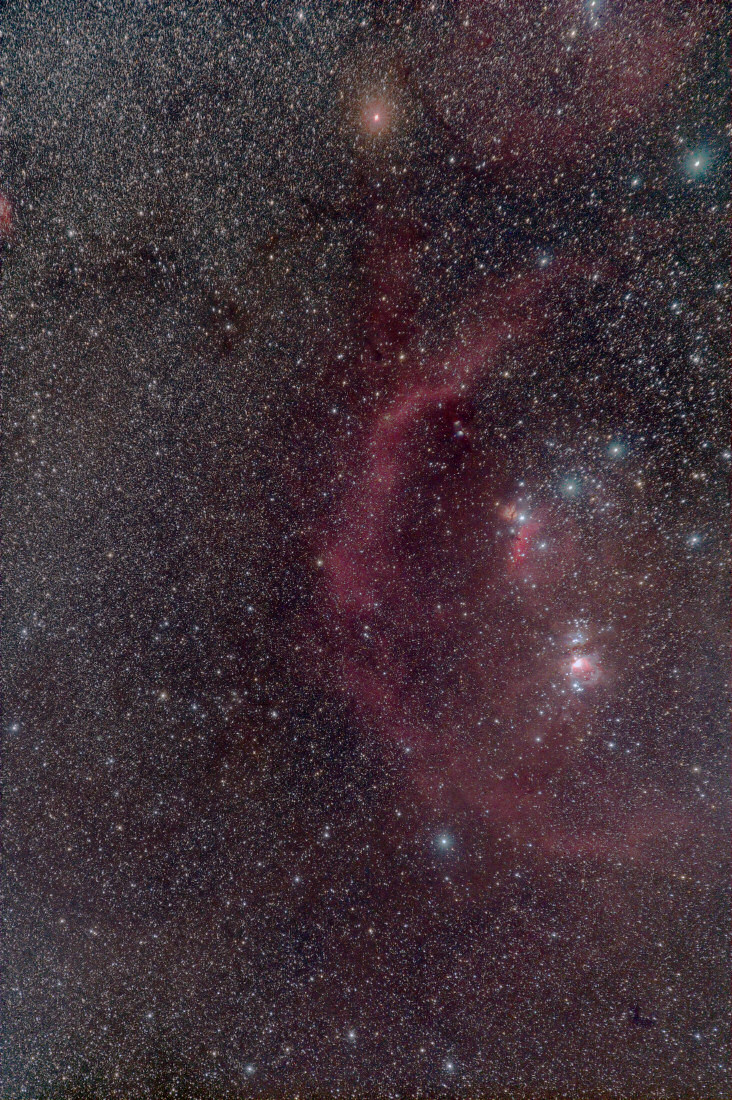
Move your mouse over the image above to get a version with constellation lines, deep-sky objects and labels drawn.
This photograph shows the eastern part of the prominent constellation Orion as well as parts of the neighboring constellations Monoceros, Canis Major and Lepus. The numerous stars towards the left edge belong to the Winter Milky Way running through Monoceros and Canis Major. The constellation of Orion seems to be shrouded in red emission nebulosity. The individual patches of nebulosity all have designations; the brighter ones NGC numbers, the fainter ones Sharpless (Sh2) or Lynd's Bright Nebulae (LBN) numbers, and dark nebulae are taken from Lynd's Dark Nebulae (LDN) catalog. Open star clusters labeled here also have NGC catalog numbers.
Most famous are the Great Orion Nebula (M42/43) in the "sword" of Orion and the Flame and Horsehead Nebulae around Alnitak, the leftmost star of Orion's belt. Those nebulae are surrounded by and clearly connected to a large half-arc of emission nebulosity which is called Barnard's Loop (Sh2-276). It is part of a giant molecular cloud which contains the bright Horsehead, Flame and Orion Nebulae as well as the smaller reflection nebula M78 and several others. Another large and faint emission nebula is Sh2-264, the so-called "Head of Orion", which surrounds λ Orionis, it is cut in two by the upper edge of the image.
A small part of the Rosette Nebula NGC 2237-46 in Monoceros just pokes out of the left edge of this photo.
 M42/43 - Great Orion Nebula, NGC 1973/75/77 - Running Man Nebula, refractor photograph.
M42/43 - Great Orion Nebula, NGC 1973/75/77 - Running Man Nebula, refractor photograph.
 Horsehead Nebula Region, Wright-Newtonian photograph.
Horsehead Nebula Region, Wright-Newtonian photograph.
 Sh-2 276 - Barnard's Loop and M78, Wright-Newtonian photograph.
Sh-2 276 - Barnard's Loop and M78, Wright-Newtonian photograph.
Exposure Data